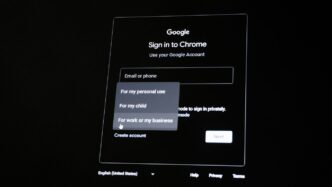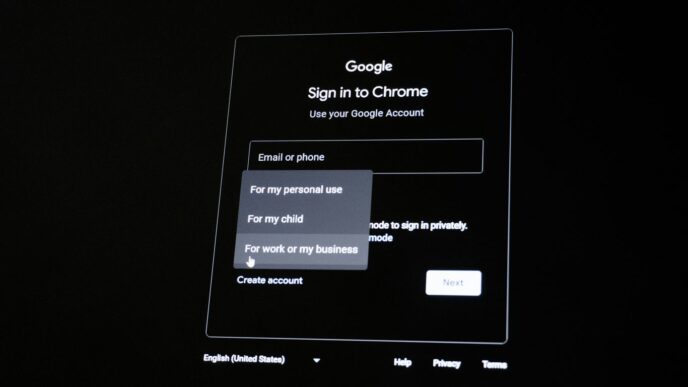Artificial Intelligence (AI) is changing the way we create content, from writing articles to generating artwork. This technology makes it easier and faster to produce high-quality material across various mediums. In this article, we will explore how AI is used in content creation, its benefits, challenges, and the future of this exciting field.
Key Takeaways
- AI helps create content quickly and efficiently.
- It can personalize content based on user preferences.
- AI tools can generate text, images, and videos.
- There are ethical concerns regarding AI use in content creation.
- The future will see more collaboration between AI and human creators.
The Role of AI in Modern Content Creation

Understanding AI-Generated Content
Artificial Intelligence (AI) is changing how we create content. AI-generated content includes text, images, and videos made by machines. These systems can learn from data and create material that makes sense and fits the context. This technology is becoming essential in many areas, from marketing to entertainment.
Benefits of AI in Content Creation
Using AI in content creation has several advantages:
- Speed: AI can produce content quickly, helping meet the high demand for new material.
- Consistency: AI tools ensure a uniform tone and style, which is vital for brand identity.
- Personalization: AI can analyze user data to create tailored content, improving engagement.
Challenges and Ethical Considerations
While AI offers many benefits, it also comes with challenges:
- Quality Control: AI-generated content may lack depth or creativity.
- Bias: AI can unintentionally reflect biases present in its training data.
- Data Privacy: Using personal data raises concerns about privacy and security.
AI is a powerful tool, but it should be used responsibly to avoid potential pitfalls.
In summary, AI is reshaping content creation, offering exciting possibilities while also presenting challenges that need careful consideration. As we explore this new landscape, understanding both the benefits and the risks is crucial for effective content creation.
AI-Powered Text Generation
AI is changing how we create text. With tools like GPT-3, we can now generate text that makes sense and fits the context. This technology helps writers be more efficient. Here are some key areas where AI is making a difference:
Automated Content Generation
- AI can write news articles, product descriptions, and even creative stories.
- It assists writers by providing ideas and drafts, rather than replacing them.
- This allows for faster content creation, which is essential in today’s fast-paced world.
Chatbots and Customer Support
- AI chatbots provide quick answers to customer questions.
- They improve user experience on websites by being available 24/7.
- This technology helps businesses save time and resources while enhancing customer satisfaction.
Content Summarization
- AI can take long articles and summarize them into shorter, easier-to-read versions.
- This makes complex information more accessible to everyone.
- It helps readers quickly grasp the main points without getting overwhelmed.
AI is not just a tool; it’s a partner in the writing process, helping to enhance creativity and productivity.
| Feature | Benefits |
|---|---|
| Automated Content Generation | Saves time, boosts creativity |
| Chatbots | Enhances customer service |
| Content Summarization | Makes information digestible |
AI in Visual Content Creation
AI is changing how we create and improve visual content. From generating images to editing videos, AI tools are making it easier for everyone to produce high-quality visuals. Here are some key areas where AI is making a difference:
Image Generation and Editing
- Image Creation: AI can create realistic images based on descriptions. This is useful for making unique product images or artwork.
- Editing Tools: AI-powered editing tools can enhance photos, remove backgrounds, and apply filters. This makes professional editing accessible to everyone.
- Speed: AI can perform these tasks much faster than humans, saving time and effort.
Video Generation
- Automated Video Creation: AI can generate videos from text descriptions. This helps in creating animations and marketing videos quickly.
- Editing Assistance: AI tools can also assist in editing videos, making it easier to produce polished content.
- Cost-Effective: Using AI for video production can reduce costs significantly.
Summary of Benefits
| Benefit | Description |
|---|---|
| Efficiency | AI speeds up the creation process. |
| Accessibility | Tools are user-friendly for all skill levels. |
| Cost Reduction | Saves money on production and editing. |
AI is not just a tool; it’s a partner in creativity, helping artists and marketers alike to push the boundaries of what’s possible in visual content creation.
Personalization and Content Recommendations

AI in Email Marketing
AI is changing how businesses connect with customers through email. By analyzing user data, AI can help create personalized email campaigns that resonate with individual preferences. This means that customers receive content that is more relevant to them, increasing engagement and satisfaction. Personalized emails can lead to higher open and click-through rates.
E-commerce Recommendations
In the world of online shopping, AI plays a crucial role in suggesting products. By looking at a customer’s browsing and purchase history, AI can recommend items that they are likely to buy. This not only enhances the shopping experience but also boosts sales for businesses. Here are some key benefits of AI in e-commerce:
- Increased sales through targeted recommendations.
- Improved customer satisfaction by showing relevant products.
- Enhanced user experience with personalized shopping journeys.
Content Curation
AI is also used to curate content that matches user interests. By analyzing behavior and preferences, AI can create personalized content feeds on platforms like social media and news apps. This ensures that users see content that is engaging and relevant to them. Here’s how AI helps in content curation:
- Analyzes user behavior to understand preferences.
- Delivers tailored content based on interests.
- Keeps content fresh by adapting to changing trends.
AI is not just about automation; it’s about creating meaningful connections with users through personalized experiences.
By leveraging AI for personalization and recommendations, businesses can create a more engaging and relevant experience for their audience, ultimately leading to better outcomes for both customers and companies.
AI Tools for Different Content Needs
In today’s digital world, AI tools are essential for various content creation tasks. They help streamline processes and enhance creativity. Here’s a look at some key areas where AI tools shine:
Text-Based AI Tools
- Jasper AI: This tool generates high-quality written content, from blog posts to marketing copy.
- SEOwind: It specializes in creating SEO-optimized articles, ensuring your content ranks well in search engines.
- Copy.ai: This platform helps with brainstorming ideas and generating engaging text quickly.
Image Generation AI Tools
- DALL-E: Creates unique images based on text prompts, perfect for marketing and social media.
- DeepArt: Transforms photos into artwork using different styles, enhancing visual appeal.
- Runway ML: Offers tools for editing and generating images, making it easier to create stunning visuals.
Video Creation AI Tools
- Lumen5: Converts blog posts into engaging videos, saving time on video production.
- Pictory: Helps create short videos from long content, ideal for social media sharing.
- Synthesia: Generates videos with AI avatars, making it easy to create professional-looking presentations.
AI tools are revolutionizing how we create content, making it faster and more efficient. They allow creators to focus on the creative aspects while automating repetitive tasks.
By leveraging these AI tools, content creators can enhance their productivity and produce high-quality content that resonates with their audience.
AI in the Arts: Transforming Creativity
Artificial Intelligence (AI) is changing how we think about creativity in the arts. It’s not just about machines taking over; AI is enhancing human creativity and opening new doors for artists.
Generative Adversarial Networks (GANs)
GANs are a key technology in AI art. They work by having two parts: one creates images, and the other checks them. This back-and-forth helps produce amazing and often surprising artworks. Here’s how they work:
- Generator: Creates new images.
- Discriminator: Evaluates the images.
- Feedback Loop: The generator improves based on the discriminator’s feedback.
Style Transfer Algorithms
These algorithms allow artists to mix styles from different images. For example, an artist can take the style of a famous painting and apply it to their own work. This leads to unique creations that blend various influences.
AI-Enhanced Photography
AI is also making photography better. It can:
- Colorize black-and-white photos.
- Upscale images to higher resolutions.
- Restore old photographs, bringing them back to life.
AI is not just a tool; it’s a partner in creativity, helping artists explore new ideas and forms of expression.
In conclusion, AI is transforming the arts by providing new tools and methods for creativity. As artists and AI work together, the possibilities are endless, leading to a vibrant future for artistic expression.
AI for Different Industries
AI is changing how different industries create and manage content. Here’s a look at how it’s making an impact in three key areas:
E-commerce Applications
In the e-commerce world, AI tools are helping businesses in several ways:
- Generating product descriptions quickly and efficiently.
- Creating personalized product recommendations based on customer behavior.
- Crafting engaging email marketing campaigns to boost sales.
These innovations help companies save time and connect better with customers.
B2B Marketing
For businesses that sell to other businesses (B2B), AI is also making a difference:
- Producing industry-specific whitepapers and case studies.
- Generating personalized sales pitches that resonate with clients.
- Creating targeted LinkedIn content to attract leads.
AI tools enable B2B marketers to create more relevant and persuasive content.
Media and Publishing
In the media and publishing sector, AI is used for:
- Generating news summaries and updates quickly.
- Creating data-driven financial reports that are accurate and timely.
- Automating content curation for digital platforms, ensuring fresh content.
These applications allow media companies to increase their output while keeping quality high.
AI is not just a tool; it’s a partner in creativity, helping industries innovate and grow.
Overall, AI is reshaping how industries approach content creation, making processes faster and more efficient. The future looks bright as these technologies continue to evolve and integrate into everyday practices.
Best Practices for Using AI in Content Creation
Supervision and Quality Control
To ensure high-quality content, always review AI-generated material. This helps catch errors and ensures the content aligns with your brand’s voice. Here are some key steps:
- Read through the content carefully.
- Edit for clarity and tone.
- Check for factual accuracy.
Transparency with Audience
Being open about using AI in your content is crucial. Let your audience know when AI has played a role in creating the content they see. This builds trust and helps them understand the process behind the content.
Ethical Use of AI
Using AI responsibly is essential. Here are some ethical considerations:
- Avoid generating misleading or biased content.
- Ensure that AI tools are trained on diverse data to minimize bias.
- Respect copyright laws and avoid plagiarism.
AI can enhance creativity, but it should never replace the human touch. Always blend AI capabilities with human insight for the best results.
| Best Practices | Description |
|---|---|
| Supervision | Review and edit AI-generated content. |
| Transparency | Inform your audience about AI involvement. |
| Ethical Use | Use AI responsibly and avoid biases. |
Future Trends in AI Content Creation
Advancements in Natural Language Processing
As technology improves, AI will create more sophisticated content. This means better understanding of language and context, allowing for more engaging and relevant articles. AI will be able to write in styles that match the audience’s preferences, making content feel more personal.
Personalized AI Narratives
Personalization is becoming a big deal. AI will not just generate content but will tailor it to individual users. This includes:
- Adjusting content based on user location.
- Considering user preferences and past behavior.
- Creating stories that resonate with specific audiences.
Integration of AI and Human Creativity
The future will see a blend of AI and human creativity. AI tools will assist writers and artists, helping them overcome challenges like writer’s block. This collaboration will lead to:
- More innovative content.
- Enhanced creative options, such as AI-generated videos and images.
- A new way of storytelling that combines human insight with AI efficiency.
The future of content creation is bright, with endless possibilities as AI continues to evolve. Embracing these changes will be key for creators to stay relevant and effective in their work.
AI-Generated Art: A New Frontier
AI in Digital Art
AI is changing how we create and appreciate art. AI-generated art uses algorithms to produce unique pieces that can surprise and inspire. Artists can now explore new styles and techniques that were once unimaginable.
Collaborations Between AI and Artists
Many artists are teaming up with AI to create innovative works. This collaboration can lead to:
- New artistic styles that blend human creativity with machine precision.
- Interactive art that changes based on viewer input.
- Unique installations that incorporate AI-generated elements.
Market Impact of AI Art
The rise of AI art is reshaping the art market. Here are some key points:
- Increased accessibility: More people can create art without traditional skills.
- New revenue streams: Artists can sell AI-generated pieces or use AI to enhance their work.
- Changing perceptions: The value of art is being redefined as AI becomes a co-creator.
The fusion of AI and art is not just a trend; it’s a revolution that is expanding the boundaries of creativity.
Conclusion
AI-generated art represents a new frontier in creativity. As technology evolves, so will the ways we create and experience art, making it an exciting time for artists and audiences alike.
Integrating AI with Human Creativity
Hybrid Content Creation Models
Integrating AI into creative processes can lead to exciting new possibilities. AI can enhance human creativity by providing tools that help artists, writers, and musicians. Here are some ways to create a hybrid model:
- AI-Assisted Brainstorming: Use AI to generate ideas or prompts that can inspire human creators.
- Drafting and Editing: Let AI create initial drafts, which humans can then refine and personalize.
- Feedback Loops: Implement systems where AI learns from human feedback to improve its outputs over time.
Enhancing Human Creativity with AI
AI tools can support and amplify human creativity in various ways:
- Data Analysis: AI can analyze trends and audience preferences, helping creators tailor their work.
- Creative Suggestions: AI can suggest themes, styles, or techniques that a creator might not have considered.
- Time-Saving: By automating repetitive tasks, AI allows creators to focus on the more imaginative aspects of their work.
Case Studies of Successful Integrations
Several projects showcase how AI and human creativity can work together:
- AI-Generated Music: Collaborations between musicians and AI have led to unique compositions that blend human emotion with algorithmic precision.
- Visual Art: Artists using AI tools like GANs have created stunning pieces that challenge traditional notions of authorship.
- Literature: Writers have used AI to co-create stories, blending their voice with AI-generated narratives.
The future of creativity lies in collaboration, where AI acts as a partner rather than a replacement. This partnership can lead to innovative outcomes that neither could achieve alone.
Conclusion
Integrating AI with human creativity is not just about using technology; it’s about creating a new way of thinking and producing art. As we explore this frontier, the potential for groundbreaking work is limitless.
Legal and Ethical Implications of AI in Content Creation
Intellectual Property Concerns
AI-generated content raises important questions about who owns the rights to the material created. If an AI creates a piece of art or writes an article, is it the developer of the AI, the user, or the AI itself that holds the copyright? This ambiguity can lead to disputes and confusion in the creative industry.
Bias and Fairness in AI
AI systems can unintentionally reflect biases present in their training data. This can result in content that is not fair or representative. To combat this, it is crucial to:
- Regularly audit AI systems for bias.
- Use diverse datasets for training.
- Implement guidelines to ensure fairness in content generation.
Data Privacy Issues
The use of AI often involves processing large amounts of data, which can raise privacy concerns. It is essential to:
- Obtain consent from users before collecting data.
- Anonymize data to protect user identities.
- Follow regulations like GDPR to ensure compliance with data protection laws.
The integration of AI in content creation is a double-edged sword; while it offers efficiency and innovation, it also demands careful consideration of ethical standards and legal frameworks to protect creators and consumers alike.
By addressing these legal and ethical implications, we can harness the power of AI responsibly and effectively in content creation.
Conclusion
In conclusion, AI is changing the way we create content, from writing articles to making art. It helps us work faster and can even personalize what we see online. However, while AI is a powerful tool, it’s important to remember that it should support human creativity, not replace it. The best results come when we combine AI’s efficiency with our unique ideas and feelings. As we move forward, finding a balance between technology and human touch will be key to making great content.
Frequently Asked Questions
What is AI in content creation?
AI in content creation means using computers to help make articles, images, and videos. It can create content quickly and help writers be more efficient.
How does AI generate text?
AI uses patterns and data to write text. It learns from examples to create sentences that make sense and sound human-like.
What are the benefits of using AI for creating content?
AI can save time, keep a consistent style, and make content that fits what people like. This helps businesses connect better with their audience.
Are there any challenges with AI-generated content?
Yes, sometimes AI can make mistakes or create boring content. It’s also important to check for fairness and privacy issues.
How is AI used in visual content creation?
AI can create images and videos from descriptions. It helps in editing photos and making animations, making it easier for artists and marketers.
Can AI personalize content for users?
Absolutely! AI can look at what users like and suggest articles, products, or videos that match their interests.
What tools are available for AI content creation?
There are many tools, like text generators for writing, image generators for creating pictures, and video tools for making videos.
What does the future hold for AI in content creation?
The future looks bright! We can expect better AI that understands language more deeply and helps us create even more exciting content.













